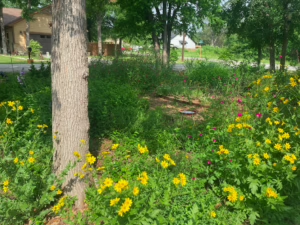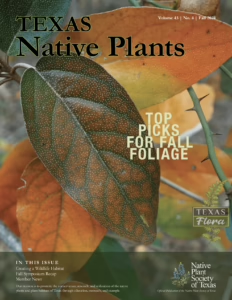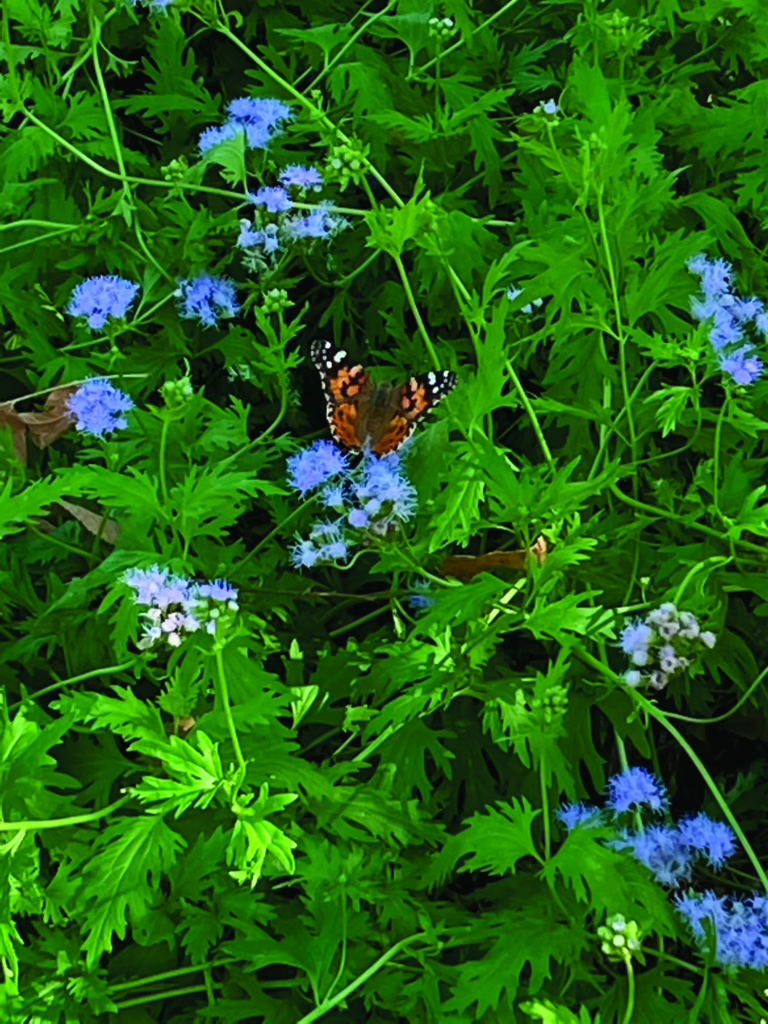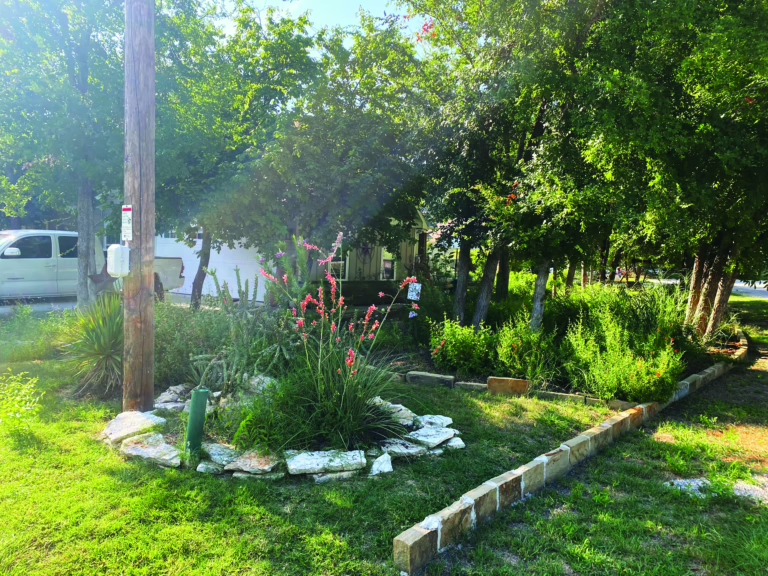
By Lindsey Townsend, Tyler Chapter
Every garden begins with an idea—and a dream. Then the work begins. Debra McStay wanted to establish a natural sanctuary where her neighborhood creatures could thrive. “For several years, I dreamed of creating a wildlife habitat—a place where animals could find food, shelter, and safety,” the Prairie Rose Chapter member recalls.

Inspired by Doug Tallamy’s book Bringing Nature Home, she began her journey years ago by adding large beds of native plants around the expanses of sod grass at her previous home. Then, in 2019, she and her husband Shawn purchased a new home in an unincorporated area of Granbury. Situated in the Cross Timbers ecosystem, the area marks the beginning of the Texas Hill Country and is characterized by rolling hills, rocky terrain, and an abundance of junipers, also known as Eastern Red Cedars (Juniperus virginiana).
“The subdivision was heavily wooded, and at the time, most lots were dense with trees and undergrowth,” she remembers. “Fortunately, our builder had the foresight to preserve many trees on our two lots, which included Cedar Elms, Live Oaks, pecans, and two Mexican Plums. The builder removed all the junipers and scraped the lot clear, leaving a blank slate under the trees.”
Over the next four years, the couple began to gradually realize their vision, adding several large beds and walking paths. When it came time to plant, they incorporated a wide variety of flowers and shrubs that bloom throughout the growing season to help provide year-round support for wildlife.
“We chose plants like sages, salvias, and coralberry bushes for shaded areas, along with Red Yuccas, Texas Sage, Flame Acanthus, native grasses, and Four-Nerve Daisies for sunny spaces,” she says. The surprise superstar of their new landscape turned out to be Gregg’s Mistflower. “It spreads and blooms beautifully, much to the delight of Queen butterflies—and my neighbors,” Debra says.
Now Debra and Shawn’s yard teems with life from a variety of species who visit regularly, including several kinds of birds. “Cardinals, chickadees, titmice, finches, red-bellied woodpeckers, and our favorite, the roadrunners, stop by for a snack, a rest, or to raise their young,” she says.
The work, of course, is never done — as all gardeners know. Since a landscape is always evolving and changing, their yard remains a constant work in progress. In 2021, Debra and Shawn also purchased the undeveloped lot behind their house, which was thick with native trees like junipers, cedar elms, and small red oaks.
They extended their backyard fence to enclose the entire area and dubbed it “The Wilds.” “It’s still wild and rugged, with a few winding paths and bird feeders. We’ve removed a few junipers to allow the red oaks and Texas ash trees to find the light,” Debra says. Most recently, the couple also added a small pond to their landscape. It has now attracted the presence of two leopard frogs, much to their delight.
Debra wants to encourage her fellow Society members who are interested in creating a wildlife habitat to dive in and get started. “It has been my passion and vision, with lots of support from Shawn, too,” she says. “I work in an office all day and am over a computer more than half of the time. I look forward to I look forward to being outside and enjoy the beauty and wonder of nature.
Creating a place for wildlife to visit or to live is my joy.”
The native trees that are present in “The Wilds” play a key role in enhancing soil health and supporting wildlife. Junipers provide food, cover, and nesting sites for birds, including the endangered golden-cheeked warbler. Cedar elms and red oaks also produce seeds and acorns that many species, including squirrels, deer, and various birds, rely on as a food source.
In creating their wildlife habitat, the McStays have not only enjoyed seeing their dream come to life. They have also gained the satisfaction of knowing they have created a healthier ecosystem for their little corner of the world. “In the spirit of my favorite author, Margaret Renkl, I know I cannot save every species or feed all the hungry creatures,” Debra remarks.
“But I can plant a garden. A garden that will provide for the birds, bees, mammals, and toads that pass by. It’s a small effort, but if everyone planted native species for local wildlife, together we could make a significant impact.”
Did you like this article? It’s from our Fall 2024 Texas Native Plants magazine. Read more here








